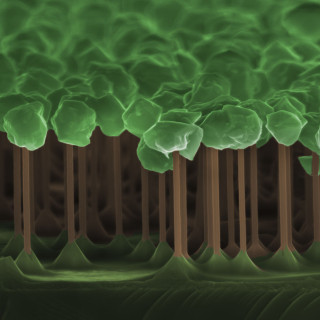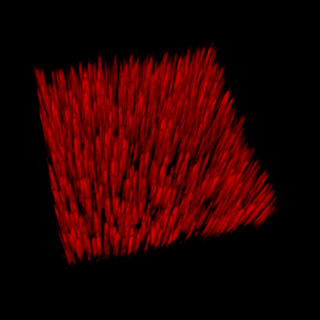What will NanoMAX mean for research on the nanoscale?
NanoMAX is the flagship beamline for the recently opened MAX IV in Lund, showcasing the full potential of the ring and introducing a variety of new tools for many different research communities in Sweden. In May 2016 the first “light” started to shine into the NanoMAX beamline. What can researchers do with it?
NanoMAX offer hard X-ray beams focused down to 10-100nm. These beams can penetrate deep into matter making it possible to study the inside of electronic devices, cells, fibres and composite materials. It will then be possible to directly image the detailed composition and structure of even very small nanoparticles or grains found deep inside both biological and man-made samples.
In contrast to most other nanoscale imaging methods that require the specimen to be cut into tiny pieces, this allows to study real structures, as they are when functioning in real life.
X-ray beams are used to look into liquid containers or gas furnaces to directly observe how chemical reactions occur at the nanoscale. This could for example be used to see the growth of quantum dots for solar cells or reactions of proteins in biological systems.
What new nanotech-based products could we see in 10 years’ time?
NanoMAX is about imaging inside even the most complex systems or during synthesis processes. This will allow Swedish companies to make better decisions when developing new materials and devices such as:
- New technologies where intelligent nanostructured components will be embedded into our clothes or into small mobile devices. NanoMAX can aid in the development of these by looking directly into these complex functional structures.
- The next generation of green technology such as batteries and solar cells, where imaging them during synthesis and operation can lead to new design strategies that will never be found by conventional trial and error experiments.
Text: Anders Mikkelsen and Pia Romare
Photo: NanoMAX
Facts
-
Quantum dots
-
Quantum dots – nanometre-sized structures that emit light when they are stimulated by energy, for example when they are illuminated. The size of the dot determines the colour of the light emitted.
-
Intelligent nanostructured components
-
Intelligent nanostructured components – components that can take measurements such as body temperature or pulse.
-
MAX IV
-
MAX IV Laboratory is a national laboratory hosted by Lund University. It operates accelerators producing x-rays of very high intensity and quality. In June 2016 it is opening its newest project with the brightest x-ray source in the world.






